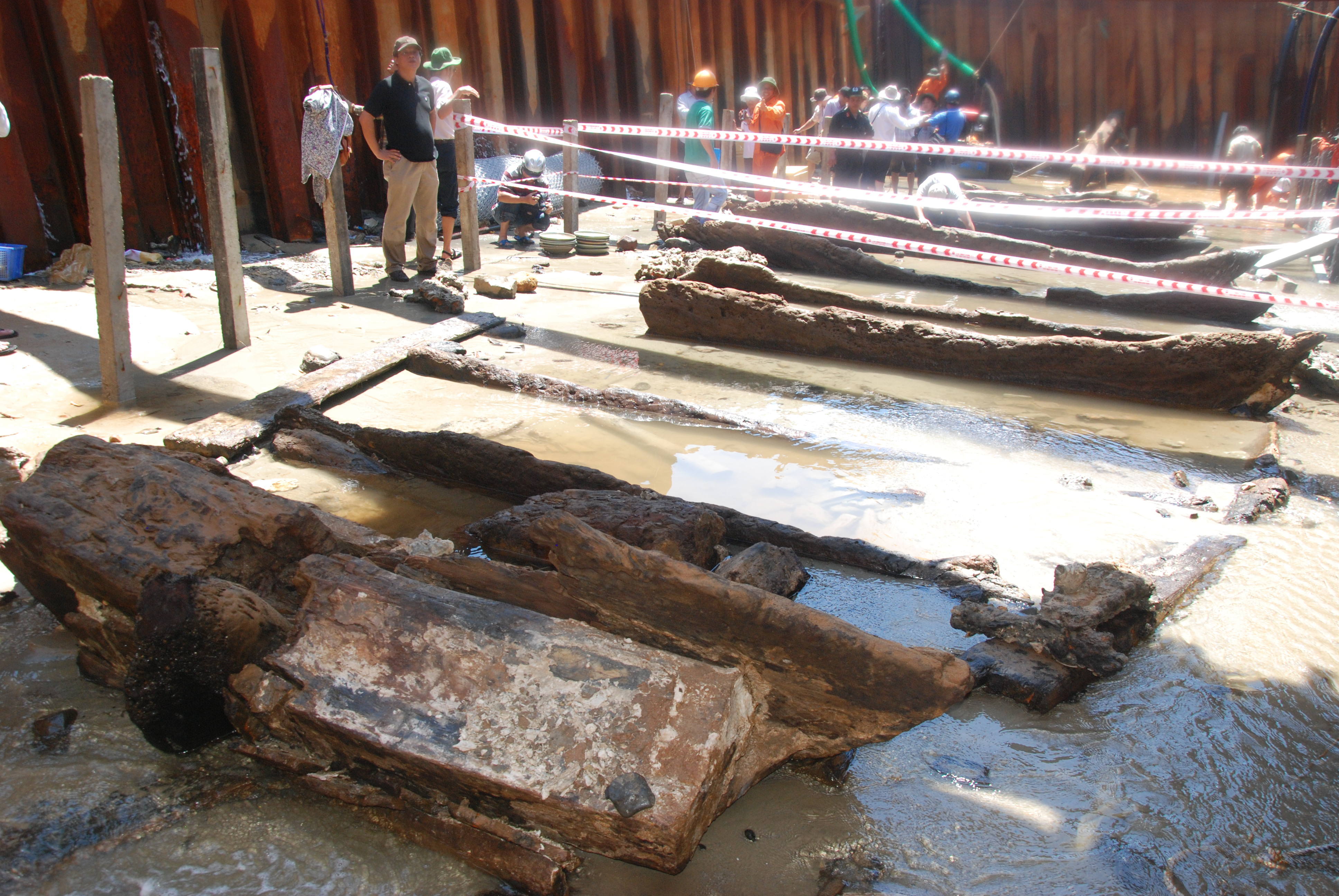The preliminary finds including unique items, recovered from the shipwreck off central Quang Ngai province’s Binh Chau commune after a painstaking excavation that kicked off early last month and adopted an innovative excavation method, are really eye-opening.
Excavator to expand site for more possible shipwrecks
According to Dr. Pham Quoc Quan, from the National Heritage Council, at the June 30 finding report meeting, this shipwreck, which dates back to the 13th century, is the oldest and relatively most intact compared to the five previous ones.
“The potteries which were previously unidentified now cement our research so far. Though we haven’t made specific inventories of all these antiques, they come in a wide variety, with many brown-glazed items unseen by archeologists before,” he noted.
The hulk and the antiques it carried have provided researchers with abundant intriguing information on various issues, including the ship’s structure and craftsmanship, the origins, quality and history of the items and their role on the Silk Road in the East Sea many centuries ago, Quan stressed.
“The hulk itself, which boasts unique, rare structure, is a treasured antique, which contributes massively to our knowledge of antique ships in Vietnam and worldwide,” said Dr. Nguyen Dinh Chien, deputy head of the National History museum.
The meeting also discussed further the two options to deal with the wrecked ship, which measures some 24 m in length and 5.6m at its widest point and is divided into 13 chambers.
Doan Sung, advisor to Doan Anh Duong Co., who is in charge of the excavation, supported the costly, time-consuming option of recovering the ship’s separate parts and desalting them before assembling and displaying the ship at the provincial museum.
However, Sung noted that the option would cost much less and take two days only if the company builds a large hole which can fit the hulk and desalts it regularly right through that hole.
“Now that the current location of the ship is in the area zoned for the construction of the Dung Quat port 2, the hulk will have to be recovered and removed sooner or later,” he noted.
However, experts had yet to show support for this option as the hulk is too large.
Meanwhile, Nguyen Van Cuong, director of the National History Museum, stressed that though the option of dipping the hulk in sand to preserve it and turn it into an in-situ tourist attraction is viable, the ship can’t stay put as the area has been earmarked for the port construction. Dr. Nguyen Viet, head of the Southeast Asian Prehistory Center, said his center will help the province with the hulk recovery by covering the entire costs in soaking it in preservatives.
“It’s great that part of the ship has ‘crawled’ near the shore, so recovering it isn’t such a tough task,” he elaborated.
“According to our research, throughout the Northeast Asia, this ship boasts the most intact parts. The ship is thus not only a prized asset to the province and the country but is also of great significance to antique ship researchers in Asia and worldwide,” Viet stressed.
Dr. Nguyen Dang Vu, head of the provincial Department of Culture, Sports and Tourism said he will submit the two options to the provincial People’s Committee and the Ministry of Culture, Sports and Tourism.
Doan Anh Duong Co. said earlier that it will seek permission from the Quang Ngai province People’s Committee to double its 300 m2 current excavation site to the entire Chau Thuan sea area as another search would likely yield more shipwrecks and antiques.
Scientists suspect that there may be more wrecked ships out there, as merchant ships hailing from the north would stop by the area to seek shelter from storms before finally sinking hundreds of years ago.
In this same area, locals had earlier discovered some other wrecked ships carrying antiques of various types, with most being potteries from China’s Ming dynasty (1368–1644) and later dynasties.





















































